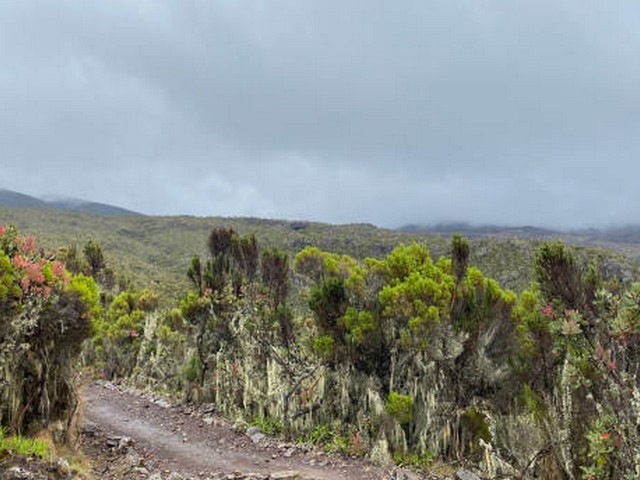How Kilimanjaro Has Shaped Tanzania’s History
Kilimanjaro is not just a mountain; it is a monumental icon that has shaped the cultural, economic, and environmental landscape of Tanzania. Standing as Africa’s tallest peak, this majestic mountain has been a silent witness to millennia of history, influencing the lives of the communities around it and the nation at large. In this blog post, we’ll explore how Kilimanjaro has molded Tanzania’s history from ancient times to the present day. Prepare to be inspired by the stories and insights brought to you by the Kilimanjaro Centre for Trekking and Ecotourism (KCTE), your premier guide to conquering this giant and experiencing the rich heritage of Tanzania.
Kilimanjaro: The Beacon of Tanzania
A Cultural Icon Through the Ages
Kilimanjaro has long been a potent symbol in local mythology and culture. For the Chagga people and other indigenous groups living around the mountain, it has spiritual significance, believed to be the home of their gods. This reverence has preserved the mountain’s ecosystem, making it a bastion of biodiversity. The narratives passed down through generations not only add a mystical allure to climbing Kilimanjaro but have also cemented its place as a cornerstone of local cultural identity.
The Impact on Trade and Economic Growth
Historically, Kilimanjaro’s fertile volcanic soils have supported vast coffee and banana plantations, making agriculture the backbone of the region’s economy. The mountain’s influence doesn’t stop there; it has been a key player in the development of eco-tourism in Tanzania. Each year, thousands of trekkers are drawn to its slopes, contributing significantly to local and national economies. The influx of adventurers has spurred improvements in infrastructure and boosted other sectors such as hospitality and services, proving that Kilimanjaro is indeed a powerhouse in Tanzania’s economic landscape.
The Environmental Guardian
Preserving Biodiversity
Kilimanjaro is not merely land and rock; it is a living, breathing ecosystem. As you ascend from its base, you traverse through distinct ecological zones — from lush rainforests to alpine deserts to its icy summit. This mountain is home to an astonishing variety of flora and fauna, some of which, like the Kilimanjaro tree hyrax and the chameleon, are endemic to the area. The mountain’s environmental importance is immense, acting as a crucial catchment area that supplies water to millions. In preserving Kilimanjaro, Tanzania preserves the lifeblood of its people and wildlife.
Climate Change and Kilimanjaro
The receding glaciers of Kilimanjaro are perhaps the most visual testament to the impacts of global climate change. These changes offer critical lessons on the vulnerability of our natural heritage and have spurred numerous local and international conservation efforts. They remind us of the urgent need to protect our environment, influencing policies and practices in Tanzania and beyond.
Kilimanjaro in Modern-Day Tanzania
A Hub for Adventurers and Scholars
As the premier destination for mountaineers and nature lovers, Kilimanjaro attracts not only those seeking adventure but also researchers and scholars. This confluence of minds has turned the area into a vibrant hub for scientific research and cultural exchange, further enriching Tanzania’s heritage and global standing.
Fostering Unity and National Pride
Climbing Kilimanjaro is seen as a rite of passage for many Tanzanians, a journey through the heart of their country’s soul. The shared experience of tackling this challenging ascent fosters a sense of unity and pride among Tanzanians. Furthermore, Kilimanjaro’s international allure brings people from across the globe to Tanzania, promoting a sense of global community and mutual respect.
Why Climb Kilimanjaro with KCTE?
At Kilimanjaro Centre for Trekking and Ecotourism (KCTE), we do not just guide you to the summit; we offer you a transformative journey infused with historical and cultural insights that honor the legacy of this great mountain. Our experienced guides are not only experts in navigating the terrain but are also custodians of local lore and environmental champions. By choosing KCTE, you are also supporting eco-friendly practices and local communities, making your climb a contributing step towards sustainable tourism in Tanzania.
Conclusion: The Timeless Legacy of Kilimanjaro
Kilimanjaro is more than Tanzania’s highest peak; it is a beacon of nature, culture, and history. Its slopes tell tales of ecological diversity, its paths lead to understanding, and its summit offers perspectives not just of the land below but also of the people who have lived in its shadow. Kilimanjaro does not just shape the physical and cultural landscape of Tanzania; it shapes hearts and minds.
We invite you to experience this majestic mountain with the Kilimanjaro Centre for Trekking and Ecotourism. Embark on more than just a climb; embark on a journey that captures the essence of Tanzania’s rich history and vibrant spirit.
Ready to explore Kilimanjaro and make history with every step? Contact KCTE today and book your trek!
Frequently Asked Questions
What is the best time to climb Kilimanjaro?
The best times to climb Kilimanjaro are during the dry seasons, from June to October and from December to March, when the weather is most favorable.
How difficult is it to climb Kilimanjaro?
Climbing Kilimanjaro is a challenge that requires physical fitness and proper acclimatization. However, with the right preparation and support from experienced guides like those at KCTE, climbers of all levels can reach the summit.
What should I pack for a Kilimanjaro trek?
Essential items include thermal clothing, waterproof gear, hiking boots, a sleeping bag suitable for low temperatures, sun protection, and plenty of layers. Don’t worry, KCTE provides a detailed packing list when you book your trek.
How does KCTE support sustainable tourism?
KCTE is committed to sustainable practices, including minimizing environmental impact, supporting local economies by hiring local staff, and contributing to conservation efforts on Kilimanjaro.
Join us at KCTE, where every trek is a step towards preserving the legacy of Kilimanjaro for future generations.




